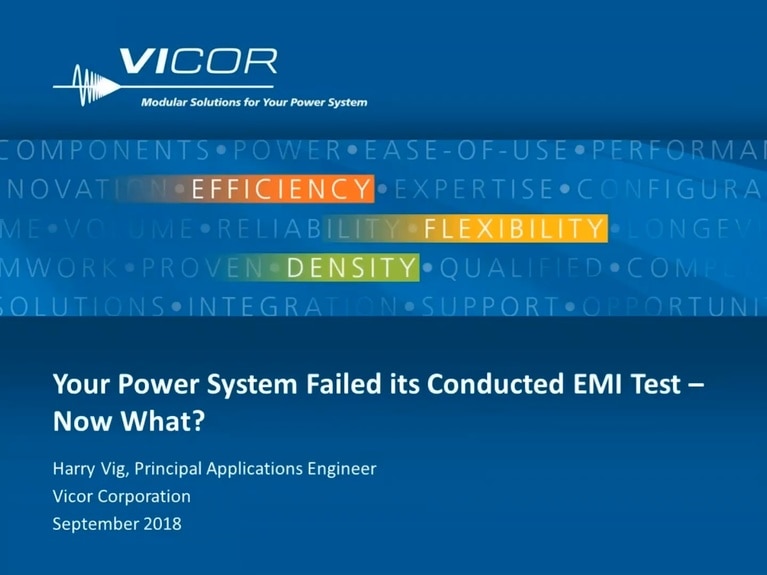You just got your test results back from the conducted emissions test lab, and your product failed. Now what?
EMI tests with a complete system are always a challenge. This test is often conducted at the end of a design cycle and not passing it can create major delays. It may even require a significant redesign of the system before it can pass. But there are techniques that can be used to help mitigate the impact of test failure on project timescales and costs.
EMI noise measured during tests is the sum of all noise generated within a system. Switching noise from a power supply is one source for conducted emissions, but there are many other pulsing circuits that need to be considered when identifying the noise sources and reducing their noise spectrum.
The content for this webinar has been devised to help anyone involved in EMI measurements or who are using switched mode power supplies and any other high noise, fast switching circuits such as motor drives, inverters or even processors.
Harry Vig graduated from the University of Waterloo in Canada with a B.Sc. in Electrical Engineering. He has worked as a test engineer and design engineer in the fields of power electronics, opto-electronics, high speed networking, thermal controls and home theatre audio and video products. During this time he has built up in-depth knowledge in the field of electromagnetic noise.
He is currently an applications engineer at Vicor, helping customers use our power components successfully in their designs.

